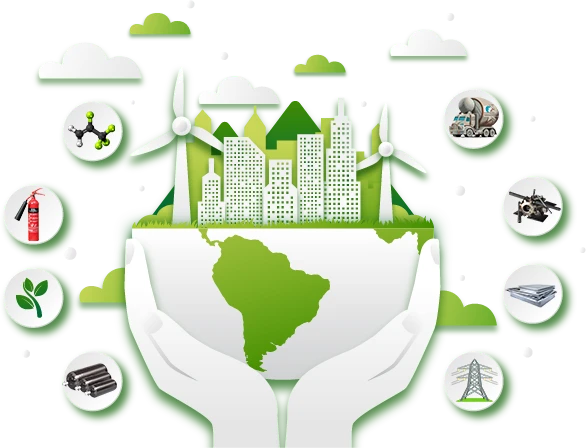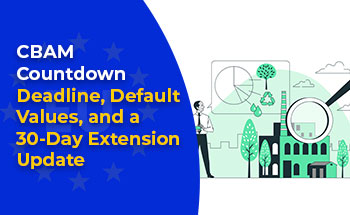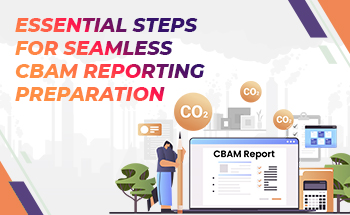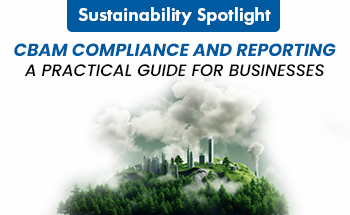
Understanding Carbon Tariff
The European Union has introduced the Carbon Border Adjustment Mechanism (CBAM), which imposes a carbon border tax on carbon-intensive products imported into the EU to reduce carbon emissions. This regulation is a part of the ‘Fit for 55 Package’, designed to reduce the EU’s greenhouse gas emissions by 55% by 2030. This mechanism promotes fair competition and encourages sustainable practices globally. The CBAM regulation covers imports of goods in cement, iron and steel, aluminum, fertilizers, electricity, and hydrogen for emissions of carbon dioxide, nitrous oxide, and perfluorocarbons.
From October 1, 2023, until December 31, 2025, companies must report the volume and embedded emissions of imported goods every quarter. This includes both direct and indirect emissions. During this period, importers are not obligated to purchase CBAM certificates to cover the embedded emissions. However, once the regulation enters its definitive period on January 1, 2026, importers must buy the necessary CBAM certificates to cover the embedded emissions. To avoid paying double the carbon tax, companies can provide carbon prices paid for the CBAM-covered goods in their country of origin. Starting from the definitive phase, the reporting period will be annual.
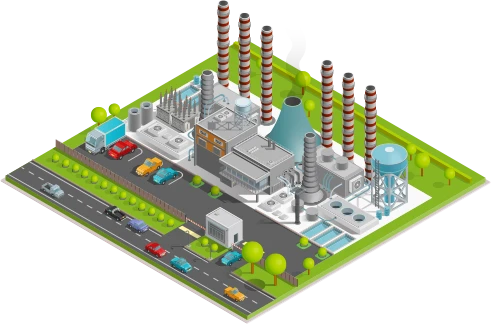

Objectives of CBAM
- Equalize the carbon price for domestic and imported EU products to prevent carbon leakage. This helps to promote fair competition and discourages countries from competing to lower their environmental standards.
- Encourage greener production of products in non-EU countries.
- Encourage innovation by enabling businesses to invest in low-carbon technologies and practices.
- Reinforce the EU Emission Trading System (ETS).
Challenges in implementing CBAM.
-
 Impact on the business model: Since CBAM aims to prevent carbon leakage, businesses that produce high-carbon-intensity goods must re-evaluate their business models and adapt to more sustainable practices.
Impact on the business model: Since CBAM aims to prevent carbon leakage, businesses that produce high-carbon-intensity goods must re-evaluate their business models and adapt to more sustainable practices. -
 Technical Challenges: To accurately calculate embedded emissions of CBAM goods, manufacturing companies must establish a robust monitoring and tracking process throughout their production.
Technical Challenges: To accurately calculate embedded emissions of CBAM goods, manufacturing companies must establish a robust monitoring and tracking process throughout their production. -
 Data Collection and Reporting: Businesses must collect and report comprehensive data to calculate their actual embedded emissions. This can be a challenging and time-consuming task for small and medium-sized enterprises. Additionally, businesses depend on their supply chain to acquire materials for producing goods. The procured goods may fall under the CBAM scope, necessitating suppliers to report on emissions, making supplier cooperation necessary.
Data Collection and Reporting: Businesses must collect and report comprehensive data to calculate their actual embedded emissions. This can be a challenging and time-consuming task for small and medium-sized enterprises. Additionally, businesses depend on their supply chain to acquire materials for producing goods. The procured goods may fall under the CBAM scope, necessitating suppliers to report on emissions, making supplier cooperation necessary. -
 Data Collection and Reporting: Businesses must collect and report comprehensive data to calculate their actual embedded emissions. This can be a challenging and time-consuming task for small and medium-sized enterprises. Additionally, businesses depend on their supply chain to acquire materials for producing goods. The procured goods may fall under the CBAM scope, necessitating suppliers to report on emissions, making supplier cooperation necessary.
Data Collection and Reporting: Businesses must collect and report comprehensive data to calculate their actual embedded emissions. This can be a challenging and time-consuming task for small and medium-sized enterprises. Additionally, businesses depend on their supply chain to acquire materials for producing goods. The procured goods may fall under the CBAM scope, necessitating suppliers to report on emissions, making supplier cooperation necessary. -
 Overall Costs: Companies may need to re-evaluate their business model, adopt new and innovative technologies to support greener initiatives, equip their facilities with better emissions tracking systems for improved data collection and reporting, and provide resources to ensure that their staff fully understand the legal implications of the regulation and potential carbon tax. As a result, companies may need to assess the financial implications of these changes.
Overall Costs: Companies may need to re-evaluate their business model, adopt new and innovative technologies to support greener initiatives, equip their facilities with better emissions tracking systems for improved data collection and reporting, and provide resources to ensure that their staff fully understand the legal implications of the regulation and potential carbon tax. As a result, companies may need to assess the financial implications of these changes.

APAs CBAM Services

At APA Engineering, we believe in a sustainable future. By embracing the Carbon Border Adjustment Mechanism, we can collectively contribute to a healthier planet while fostering economic growth.
- Awareness and Training: This would involve educating relevant stakeholders and suppliers about the details, implications, and compliance requirements of the Carbon Border Adjustment Mechanism.
- Support during the transitional period: Assist businesses by following up with suppliers, validating their emissions data, and circulating information back to them. Provide any necessary technical assistance for calculating and reporting embedded emissions during the transitional period.
- Software support: APAs ESGHQ sustainability software can generate supplier surveys to collect emission-related data from suppliers and calculate product GHG emissions.


